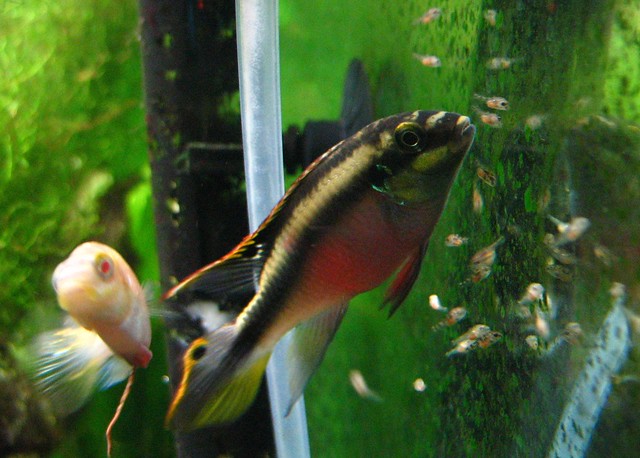 |
| Kribensis, female (Photo credit: Wikipedia) |
These fish are also very popular as they are very easy to take off even for younger children. The fish were home at Ethiop River, Niger Delta where the water offers low-lying blackwater streams, which is acidic and more alkaline and has harder water than other streams that join the river.
Your Kribensis love caves or other small hiding areas where they will feel a bit more at home even if your fish were never actually there but only ancestors. Adding real and artificial plants to the aquarium would be a nice enhancement but the plants will need to be buried very well as this type of fish does not like to burrow and will uproot the plants if possible.
love caves or other small hiding areas where they will feel a bit more at home even if your fish were never actually there but only ancestors. Adding real and artificial plants to the aquarium would be a nice enhancement but the plants will need to be buried very well as this type of fish does not like to burrow and will uproot the plants if possible.
The fish are trying to destroy their home; it is just instinct to burrow. Not only will your fish want a few places to hide, they also need room to swim. The aquarium should give them plenty of room to swim and hide. In a smaller environment, kribensis have been known to become aggressive as there are territorial. As long as you have given them adequate, room to swim you will enjoy watching these fast swimming fish to stop quickly and turn directions. The best size aquarium for these fish is a 20 gallon.
for these fish is a 20 gallon.
If you wish to introduce other fish to your kribensis, bottom dwellers and slow-moving fish are not the best. Even though these fish are not necessarily aggressive, they tend to nip at the fins of slow fish like the Angelfish. As well as the bottom-dwelling fish, these fish will feel threatened as if their territory is being taken away by the new fish, so other fish that enjoy hiding in caves are also a no-no.
Your fish should be fed no more than can be eaten in five minutes. They enjoy all kinds of fish food including flakes, lives, granular, or frozen.
If you have any questions regarding the Kribensis, you should talk with an assistant at the fish store. They will be able to provide you with all the answers you need to keep healthy and happy fish, as well as give you information on other fish that can live in the same tank without problems.



